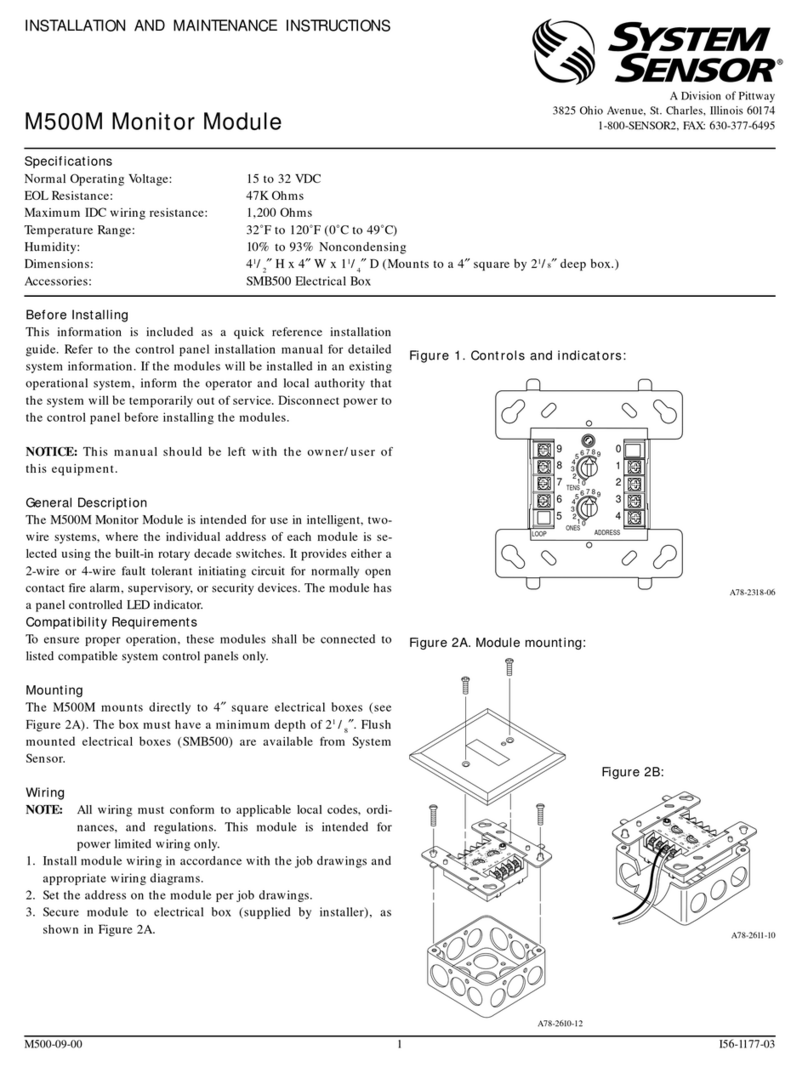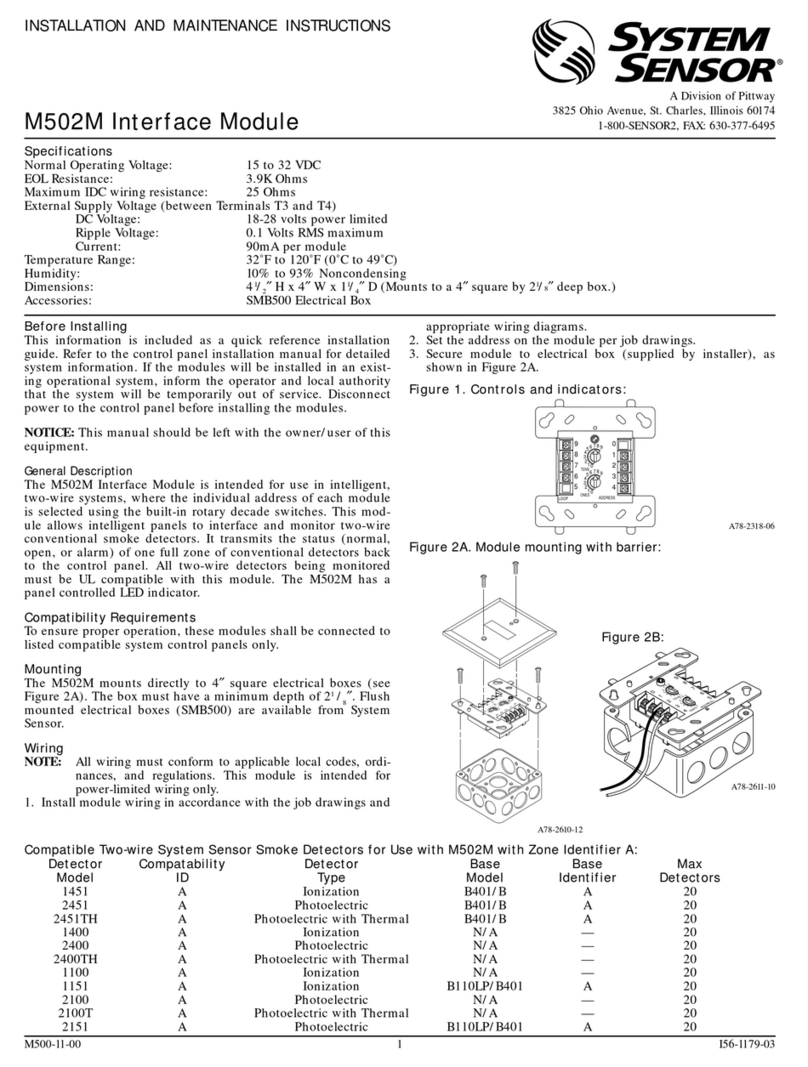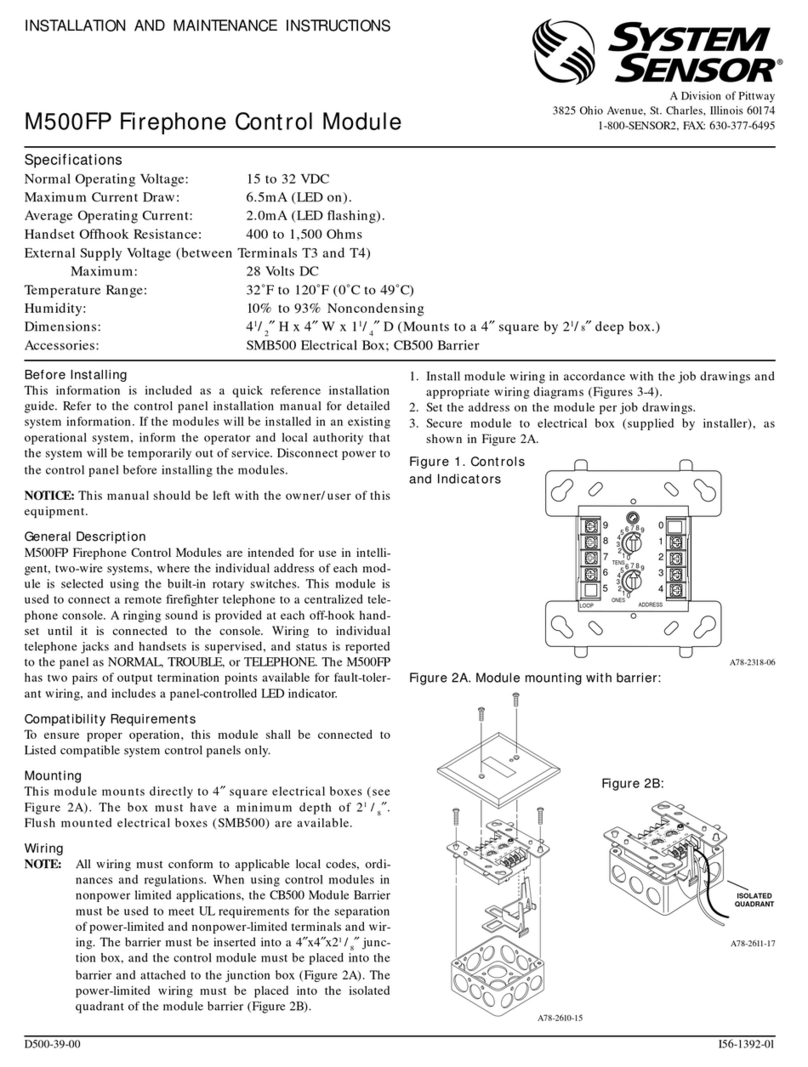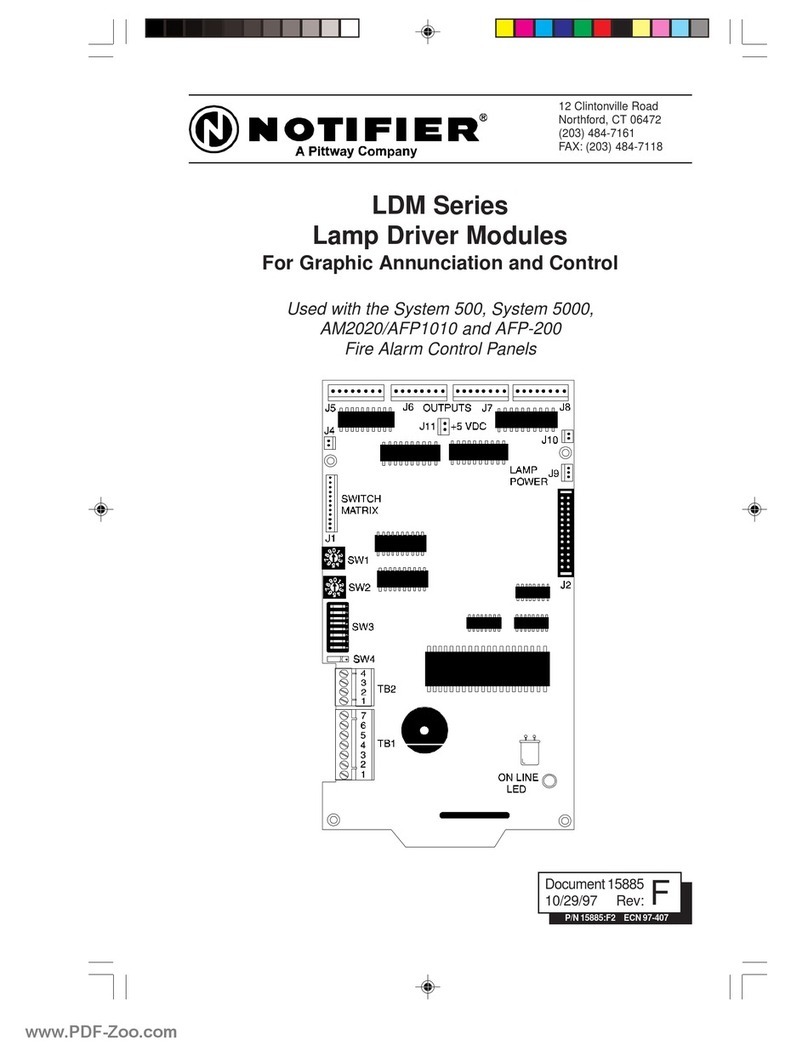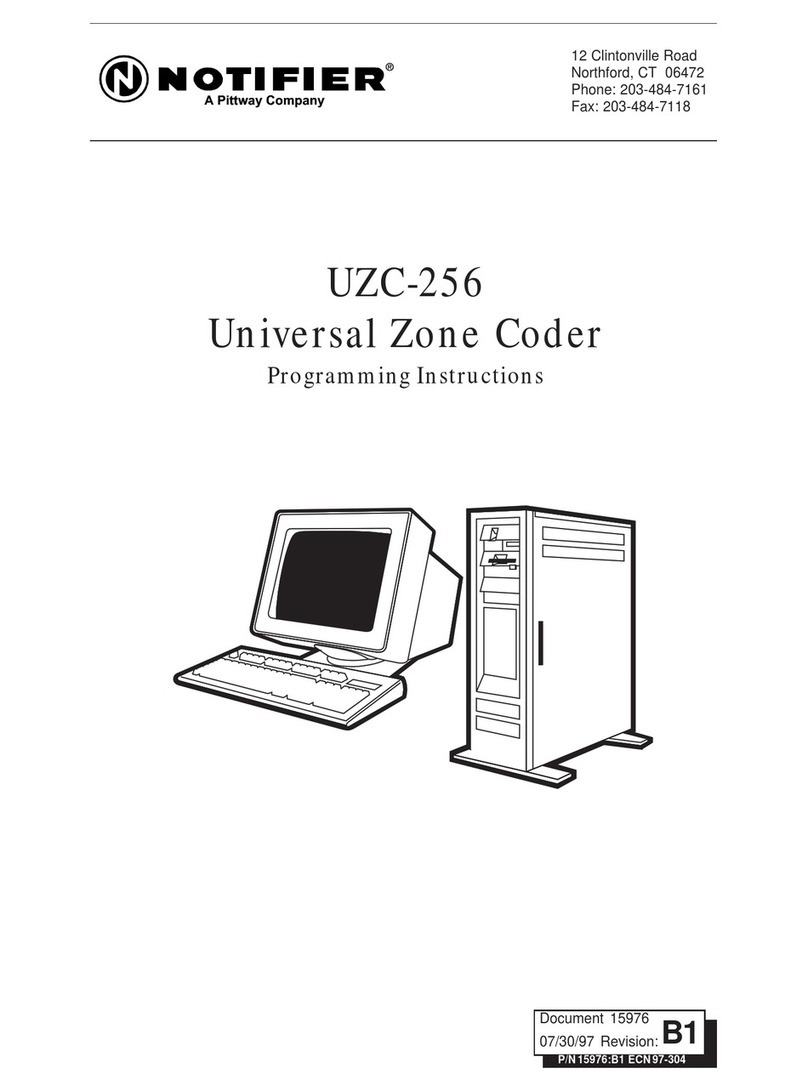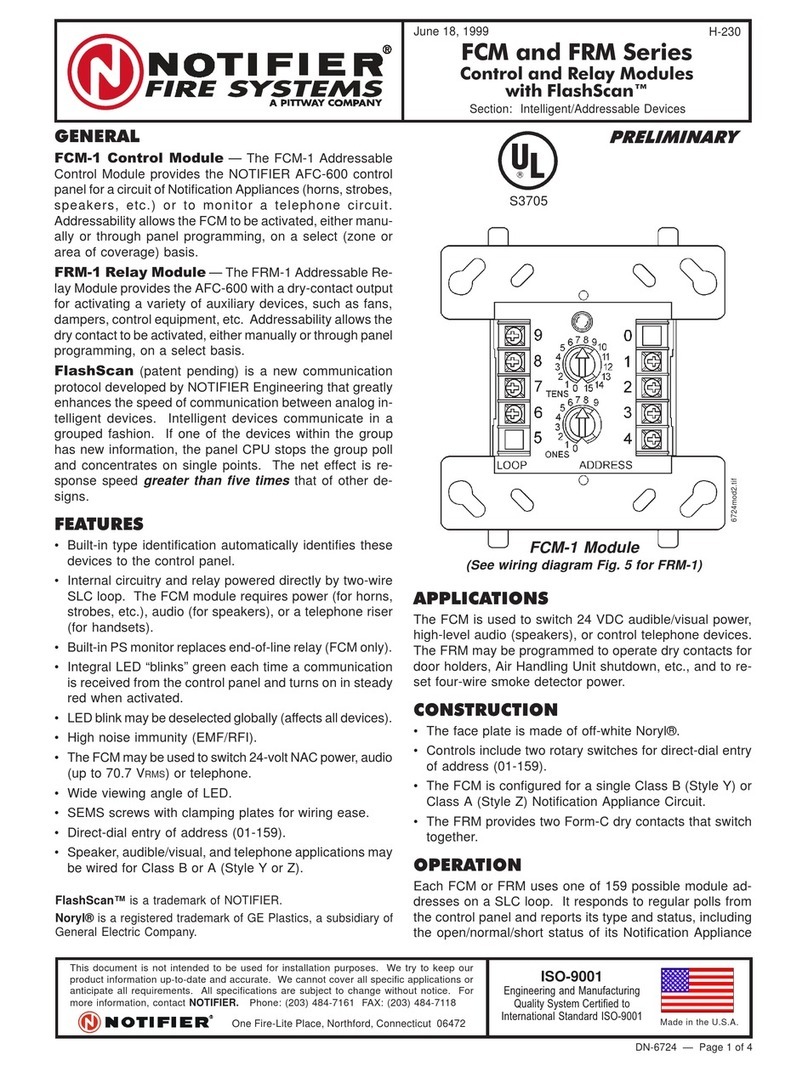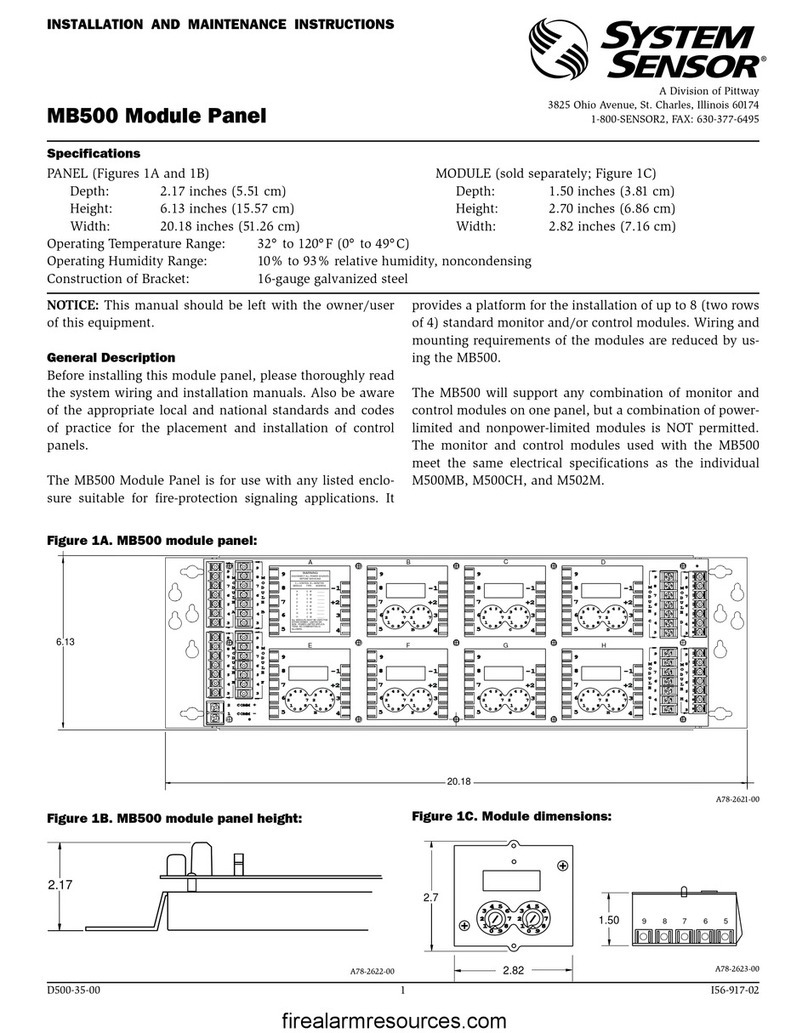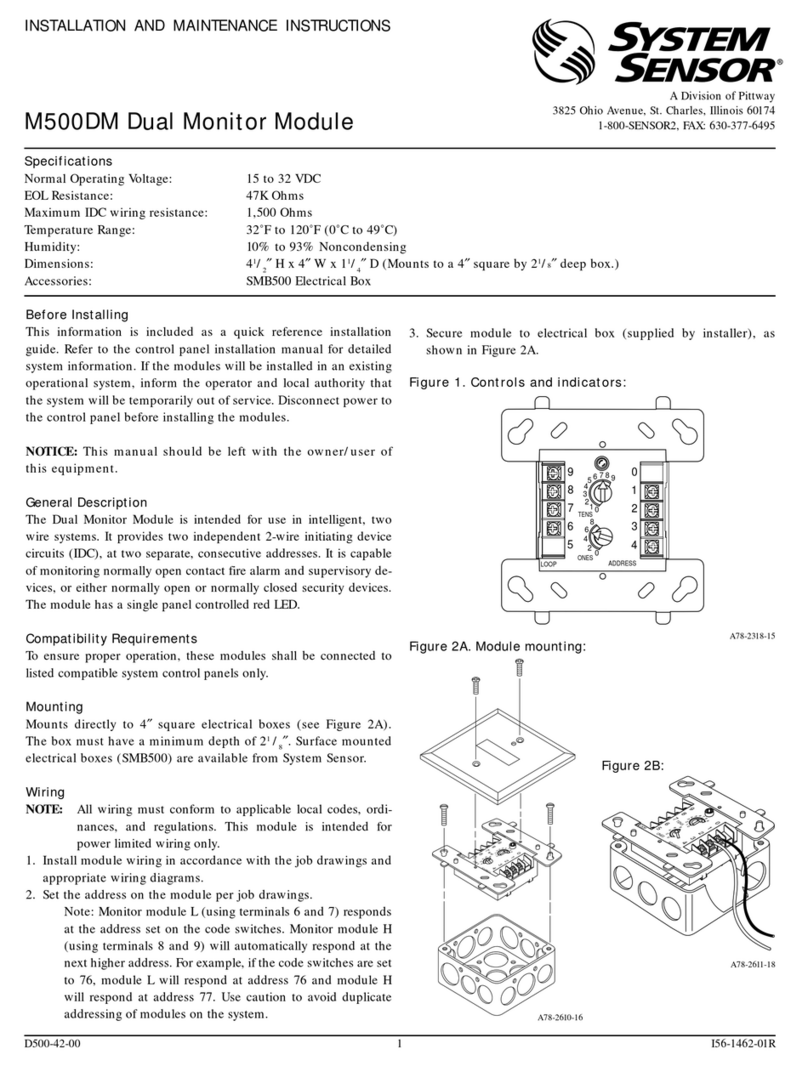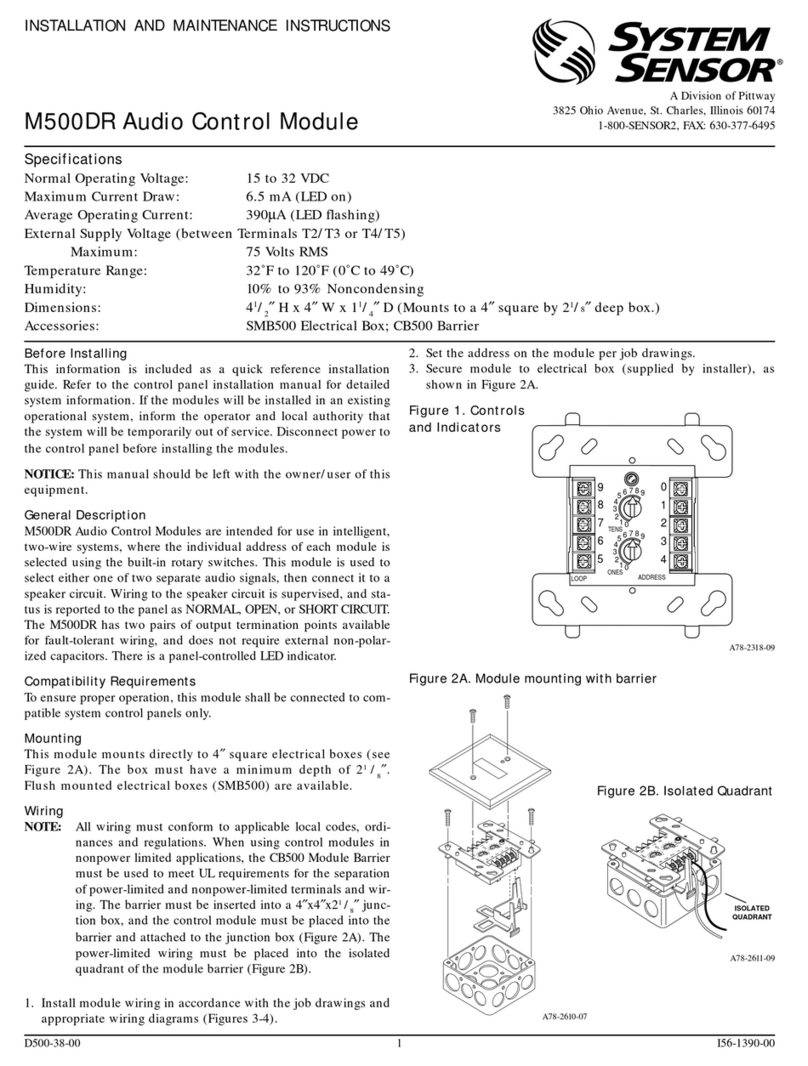
Page 2 A05-193-02
Testing and Maintenance
Test DetectorReinstall or
Replace Screen
Check Sensitivity Vacuum and/or Blow-Out
Screen and Chamber
Smoke Detector Maintenance
Nuisance alarms from smoke detectors can be caused by a
number of conditions, but one of the more prevalent is
lack of proper maintenance. Everyday dust, grime, and
moisture can render detectors ineffective or change
sensitivity levels.
Ease of Maintenance
NFPA 72 requires that all smoke detectors shall be visually
inspected in place at least semiannually to identify missing
detectors, detectors with impeded smoke entry,
abnormally dirty detectors, and detectors no longer
suitably located because of occupancy or structural
changes. The standard also goes on to say that a test shall
be performed annually to assure that each smoke detector
is operative and produces the intended response.
System Sensor detectors have been designed with these
requirements in mind. Detectors may be disassembled
quickly to allow convenient access to the special .020″
(0.5mm) mesh insect screen and chamber.
The screen should be removed and thoroughly cleaned
with a soft brush or vacuum to remove all loose and
excessive dirt buildup. Clean compressed air is
recommended to blow out any remaining debris on the
screen or in the sensing chamber.
Simple Testing
Test by pushing recessed
switch with any 0.1″maximum
diameter object
Photo unit can be tested
by inserting calibrated
test card and moving
it counterclockwise
into position.
NOTE:
Detector cover
removed
Once cleaned, the detectors must be reinstalled and tested
to insure proper operation of the system. All direct-wire
detectors are equipped with a recessed switch that can be
activated using any 0.1″maximum diameter object. When
the switch is activated, the LED on the detector should
light within 20 seconds to indicate alarm status. Plug-in
detectors (with separate base) incorporate the use of a
magnet test. The 400 Series photo can also be tested with
a calibrated test card. A special slot in the screen housing
allows the test card to be inserted into the chamber. The LED should indicate a latched
alarm condition after 20 seconds when the ALARM end of the card is used; no reaction should occur when tested with
the NO ALARM end.
These built-in test functions are designed to simulate a 3% per foot obscuration level on the ionization units and a
4% per foot obscuration on the photoelectronic units. This is more than sufficient to determine if the detector will
alarm, but is not an adequate way to test and verify a unit’s sensitivity as required by NFPA 72. Instead, use the
MOD400R Sensitivity Test Module to satisfy the NFPA requirement for testing sensitivity.
System Sensor Worldwide Manufacturing & Distribution
In Canada:
Telephone: 905-812-0767
Fax: 905-812-0771
In China:
Telephone: 852-2191-9003
Fax: 852-2736-6580
In the Far East:
Telephone: 852-2191-9003
Fax: 852-2736-6580
In India:
Telefax: 91-022-8202564
In Italy:
Telephone: 39-40-9490-111
Fax: 39-40-382137
In the United Kingdom:
Telephone: 44-1403-276500
Fax: 44-1403-276501
